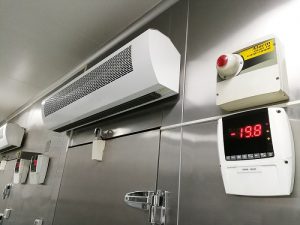Understanding Ventilation Requirements for Cool Rooms
Cool rooms are essential for businesses that require storage of perishable goods at controlled temperatures. Proper ventilation is a critical aspect of maintaining the desired conditions within these cold storage spaces. In this article, we’ll delve into the various ventilation requirements necessary for a well-functioning cool room. What ventilation is required for coolroom?
The Importance of Ventilation in Cool Rooms
Ventilation in cool rooms serves several vital purposes. It helps regulate temperature, control humidity, prevent the buildup of harmful gases, and maintain the overall air quality. Without proper ventilation, cool rooms can become breeding grounds for mold, bacteria, and other contaminants, jeopardizing the integrity of stored products.
Ventilation Considerations
1. Air Exchange Rate
The air exchange rate, often measured in air changes per hour (ACH), indicates how many times the air within a cool room should be completely replaced in an hour. For cool rooms, the recommended ACH can vary based on the type of products stored. Perishable items might require a higher ACH to ensure freshness, while products with longer shelf lives could manage with a lower rate.

2. Airflow Direction and Distribution
Strategically planning the direction and distribution of airflow is crucial. Cold air tends to sink, so vents should be positioned to allow for proper circulation. This ensures an even distribution of temperatures and prevents the formation of hotspots or areas with inadequate cooling.
3. Humidity Control
Humidity levels within a cool room must be effectively controlled to prevent moisture-related issues. Excess humidity can lead to condensation, which might compromise the quality of stored goods and encourage mold growth. Proper ventilation systems should include mechanisms for humidity regulation to maintain an optimal environment.
Types of Ventilation Systems
1. Mechanical Ventilation
Mechanical ventilation involves the use of fans, blowers, or air conditioning systems to actively circulate air. This type of ventilation is particularly useful in maintaining a consistent airflow and temperature distribution within the cool room. Mechanical ventilation systems can be adjusted based on the specific cooling needs of the stored products.
2. Natural Ventilation
Natural ventilation relies on passive methods to facilitate air exchange. It often involves strategically placed vents, louvers, or openings that allow air to flow in and out. While this method can be more energy-efficient, it might not provide the same level of control as mechanical systems, especially in areas with unpredictable external conditions.
3. Combination Systems
In some cases, a combination of both mechanical and natural ventilation systems might be employed. This approach harnesses the benefits of each system to optimize cooling efficiency while minimizing energy consumption.
Factors Influencing Ventilation Requirements
1. Room Size and Layout

The dimensions and layout of the cool room play a significant role in determining ventilation requirements. Larger rooms might need more powerful ventilation systems to ensure proper airflow reaches all corners.
2. Temperature Range
Different products require different temperature ranges for optimal preservation. Ventilation systems should be capable of maintaining the desired temperature consistently throughout the entire cool room. For cool room cleaning commgen see here.
3. External Environment
The climate and external weather conditions can impact the ventilation needs of a cool room. Hotter climates might require more robust ventilation to counteract higher external temperatures.
Maintaining and Monitoring Ventilation Systems
Regular maintenance and monitoring of ventilation systems are essential to ensure their effectiveness. Filters should be cleaned or replaced as needed to prevent the buildup of debris that can obstruct airflow. Additionally, temperature and humidity sensors should be calibrated to provide accurate readings for optimal control.
Conclusion
Proper ventilation is a cornerstone of effective cool room management. By considering factors such as air exchange rate, airflow direction, humidity control, and ventilation system type, businesses can create an environment that preserves the quality and freshness of stored goods. Whether through mechanical, natural, or combination ventilation systems, maintaining the right conditions

Recent Comments